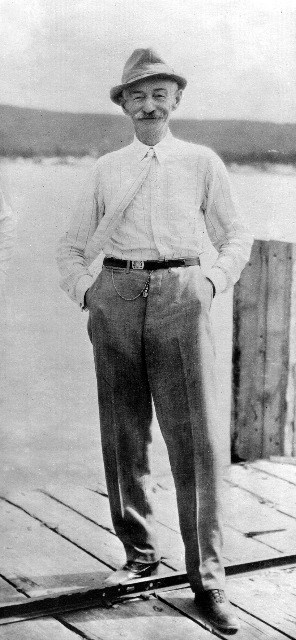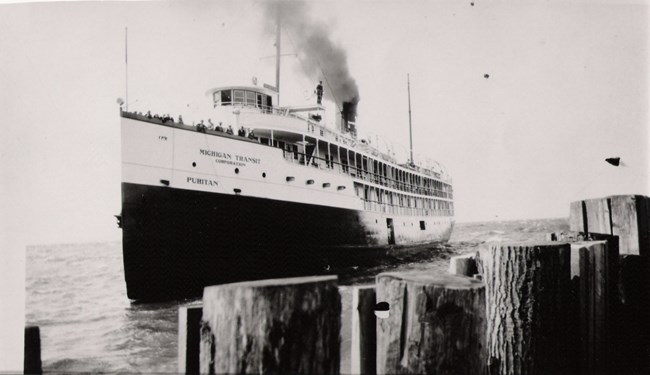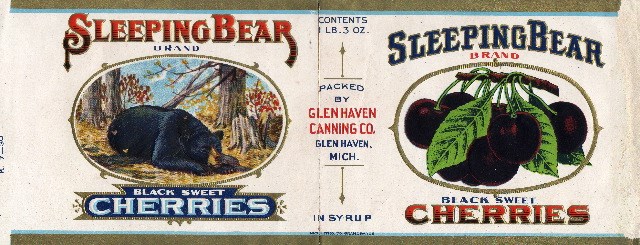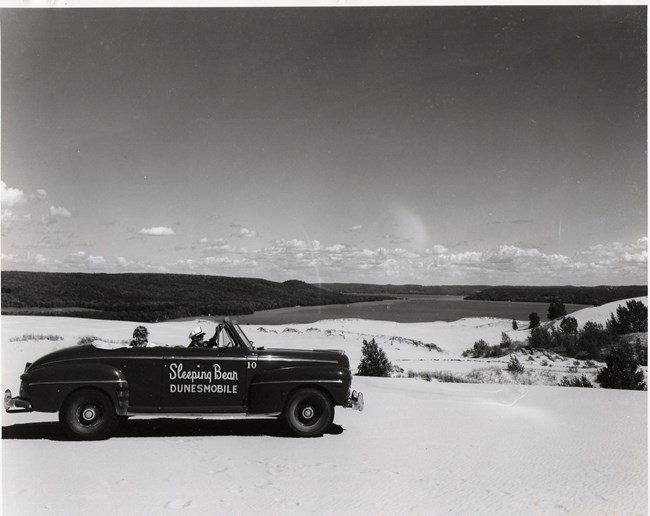
NPS Photo / Phil Akers Glen Haven is the best-preserved cord wood station on the eastern shore of Lake Michigan, and perhaps in the entire Great Lakes. It was a company town, eventually diversifying into farming, canning of fruit, and tourism. Today, the history of Glen Haven is still preserved within several buildings that you can visit during your trip to Sleeping Bear Dunes:
History of Glen Haven
In 1857, C. C. McCarty built a sawmill and an inn on the beach west of Glen Arbor. He called the settlement Sleeping Bearville. A dock was added in 1865, and he also built a sawmill on Little Glen Lake, where tugboats could transport logs. Once the lumber was cut up, it was transferred to the Glen Haven dock by wagon or sled. D. H. DayIn 1878, NTC President Philo Chamberlain acquired Glen Haven. The 24-vessel fleet running between Ogdensburg, NY and Chicago or Milwaukee needed a refueling station, and Sleeping Bear Bay offered a protected harbor. Chamberlain picked D.H. Day, his sister-in-law's younger brother, to serve as NTC's agent in Glen Haven. Before long, Day acquired most of NTC's property, including the village of Glen Haven itself. He also bought shares of two NTC steamers (the Lawrence and Champlain). 
D.H. Day III Glen Haven WorkersThe Sleeping Bear Inn, which was near the dock, provided food and board to lumberjacks, dock workers, and passengers. The front rooms of the inn were nicer and were usually rented to businessmen. Workers stayed in the large bunk rooms in the back, which were added later. Most of the socializing occurred in the large parlors on the first floor, or on the porch, which was enclosed in 1928. 
NPS Village PasttimesThe arrival of steamers was a festive occasion on Glen Haven beach. Locals often watched the docking in a small boat. It would take about an hour for 20-30 men to unload the cargo. When lumber was swept off ships in a storm, townspeople gathered the wood to build houses and barns. 
Evolution of IndustryAgricultural use of land in the Glen Haven area changed as trees were logged. By the early 1920s, D. H. Day had established the Glen Haven Canning Company on the shore near the dock. He supplied the fruit from his farm and orchard, located south of the village, where he grew over 5,000 cherry and apple trees. The Canning Company processed the fruit and shipped it to market from the Glen Haven Dock. As roads and rail services improved, the importance of the Glen Haven dock continued to decline until it was finally closed in 1931. Today, the Cannery serves as a Great Lakes boat museum. 
Since D. H. DayIn 1935, Louis Warnes and his wife Marion (D. H. Day's youngest daughter) began running Sleeping Bear Dunesmobile Rides out of Glen Haven. They began the business with a used 1934 Ford, taking 4 people at a time to the crest of the dunes and back for 25 cents each. By the time the rides ended in 1978, there were 13 dunes wagons each carrying 14 passengers on a 12-mile, 35-minute excursion. Much of the content of this page was excerpted from Sleeping Bear - Yesterday & Today, by George Weeks, which contains a detailed and illustrated history of the Glen Haven area. It is available at bookstores both within the National Lakeshore and in the local area. 
Glen Haven Early History
Listen to Ranger Marie Scott tell the history of Glen Haven's beginning, and the bustling Manitou Passage. First of Three videos 
Glen Haven - Sleeping Bear Inn
Ranger Marie Scott continues her talk in Glen Haven and the history around the Sleeping Bear Inn. 
David Henry Day
Ranger Marie Scott expands on DH Day in his room at the Sleeping Bear Inn (before it was restored and open to the public). |
Last updated: April 3, 2025
